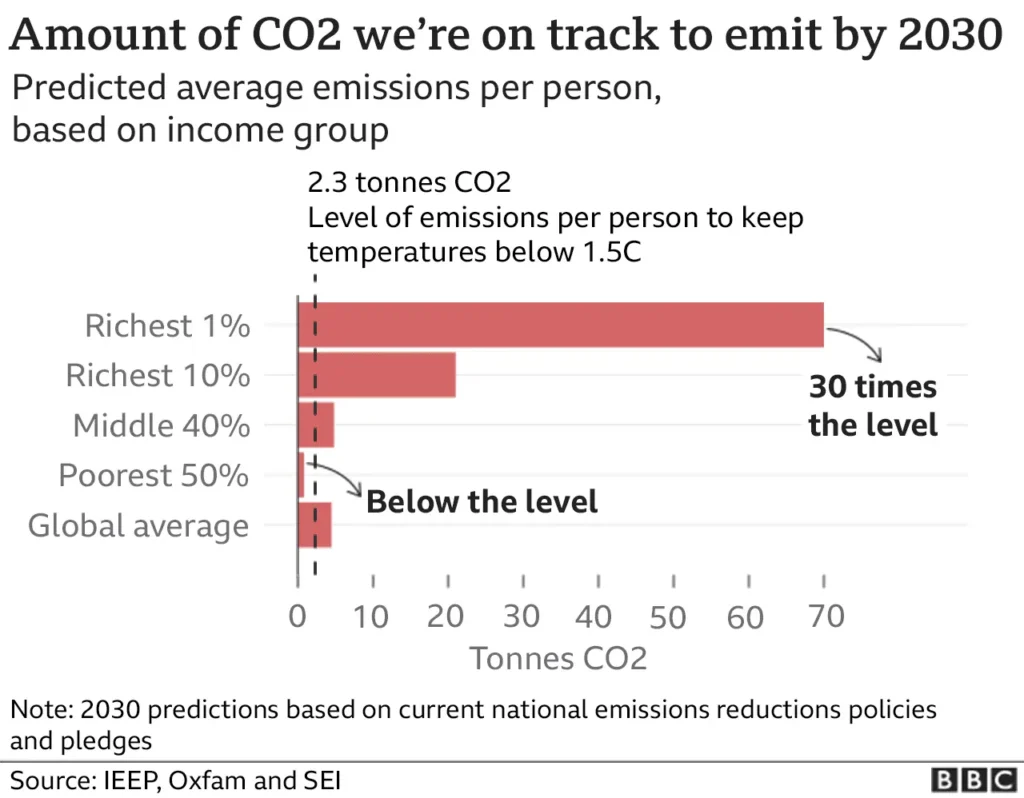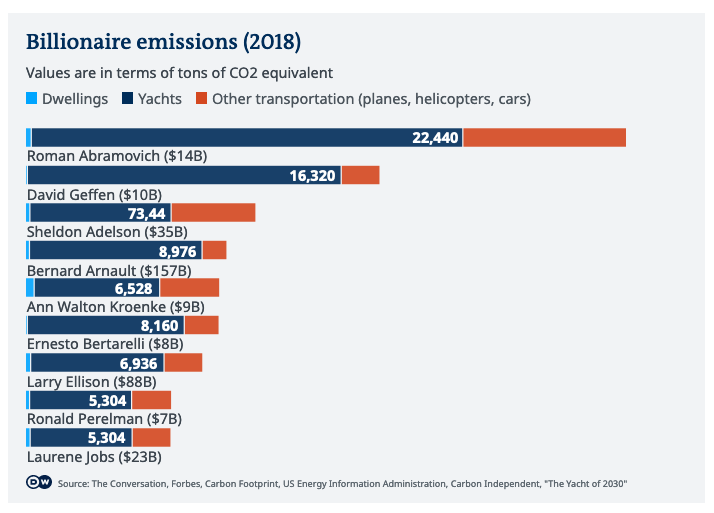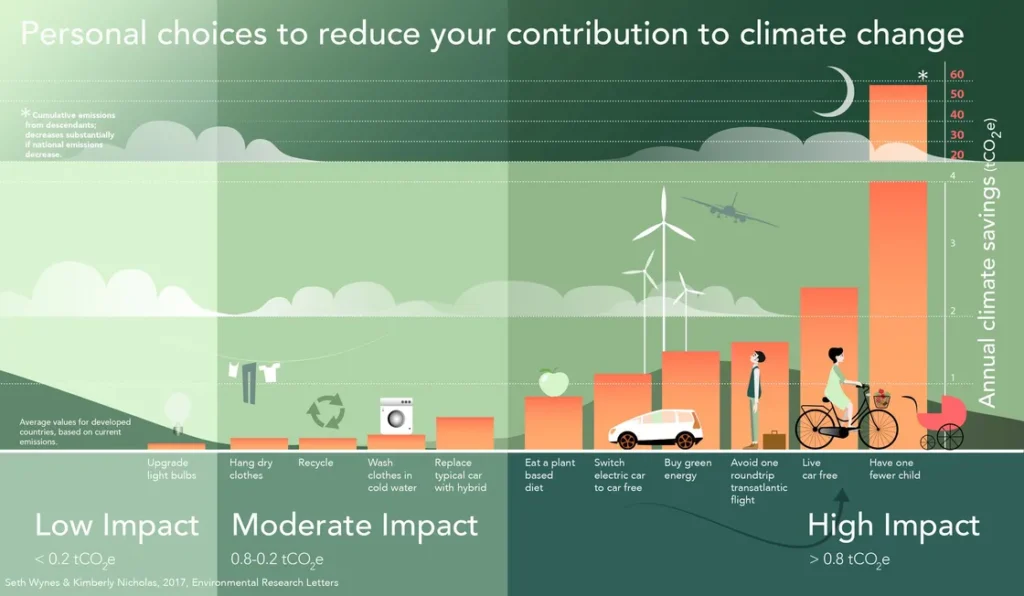As climate change accelerates, a growing body of research reveals that the world’s wealthiest individuals bear a disproportionate responsibility for carbon emissions.
While lifestyle changes among the general population are essential, the extreme consumption patterns of the top 1% significantly drive global carbon footprints.
This article uncovers who these individuals are, the sectors they dominate, and explores potential solutions to mitigate their environmental impact.
The Disproportionate Carbon Footprint of the Top 1%

Image source: BBC
a. Extreme Consumption Patterns:
Research consistently shows that the top 1% of the world’s wealthiest individuals are responsible for a significant portion of global carbon emissions.
According to a report by Oxfam and the Stockholm Environment Institute, the richest 1% of the global population is responsible for more than double the carbon emissions of the poorest 50% combined.
This disparity is driven by luxury lifestyles, including private jets, yachts, and multiple large homes, which contribute to excessive carbon footprints.
b. Who Are These People?

Image source: Impakter
The top 1% comprises billionaires and multi-millionaires from various sectors:
Technology: Tech moguls like Jeff Bezos (Amazon) and Elon Musk (Tesla, SpaceX) are known for their extravagant lifestyles and high carbon footprints.
Finance & Investment: Executives in the finance sector, including hedge fund managers and investment bankers, often lead carbon-intensive lives.
Entertainment & Sports: Celebrities and professional athletes frequently own multiple properties and use private jets, significantly contributing to emissions.
Oil & Gas: Individuals and families owning large stakes in fossil fuel companies are direct contributors to carbon emissions through their business operations.
Impact by Numbers: A study published in the journal Nature Communications revealed that the top 1% is on track to emit 70 tonnes of CO2 per person annually by 2030, compared to the global average of 2 tonnes per person.
This stark contrast highlights the need for targeted actions to address their disproportionate impact.
Mitigating the Impact of the Top 1%

Image source: Energy in Demand
a. Policy Interventions
Carbon Taxes & Wealth Taxes: Implementing progressive carbon taxes and wealth taxes can incentivize the wealthy to reduce their carbon footprints. These funds can be redirected towards sustainable development and renewable energy projects.
Regulating Luxury Emissions: Governments can introduce regulations specifically targeting emissions from luxury activities, such as private jet travel and large yachts, by imposing higher taxes or stricter emission standards.
b. Corporate Accountability
Mandatory Reporting: Companies should be mandated to disclose their carbon footprints, including those of their top executives. This transparency can drive accountability and encourage the adoption of greener practices.
Sustainable Investment: Encouraging or mandating investment in sustainable and renewable energy projects can redirect funds from high-carbon activities to environmentally friendly alternatives.
How the Common Man Can Contribute?

Image source: Lund University
While systemic changes targeting the wealthy are crucial, individual actions also play a vital role in mitigating climate change. Here are some impactful lifestyle changes:
Having One Fewer Child: According to a study published in Environmental Research Letters, having one fewer child can save an average of 58.6 tonnes of CO2-equivalent emissions per year.
Adopting a Plant-Based Diet: Shifting to a plant-based diet can reduce an individual’s carbon footprint by up to 73%, as per research from the University of Oxford.
Using Green Energy: Switching to renewable energy sources for home electricity can cut household carbon emissions by 30% or more, depending on the energy mix.
Avoiding Personal Cars: Opting for public transportation, cycling, or walking can significantly reduce carbon emissions. The Union of Concerned Scientists estimates that using public transport instead of a car can reduce an individual’s carbon footprint by 4.6 tonnes of CO2 per year.

The carbon footprint of the top 1% is a significant driver of global emissions, highlighting the urgent need for targeted policies and lifestyle changes.
While individual actions like adopting plant-based diets and using public transport are vital, systemic changes, including progressive taxation and corporate accountability, are essential to address the disproportionate impact of the wealthiest.
By combining policy interventions with personal responsibility, we can collectively work towards a more sustainable future and mitigate the catastrophic effects of climate change.

